While military simulations existed long before 2001, prior releases were marked by three distinct limitations.
First, they typically focused on a single aspect of warfare, be it aircraft (Dynamix's Red Baron), submarine (the venerable Silent Service, by MicroProse), infantry (Hidden & Dangerous from Illusion Softworks), helicopter (MicroProse's Gunship 2000) or tank (MicroProse's M1 Tank Platoon). And while they competently portrayed their chosen segment of warfare, they didn't offer gameplay outside of their narrowly defined scope (you couldn't, say, park your submarine and hop into a flying boat for a change of pace).
Second, the game worlds they operated within were either vast but overly simplistic — with some terrain detail but sparse asset populations (as in the case of most vector-based flight sims); or detailed but annoyingly small (when plodding around as infantry).
And third, the scale of conflicts they portrayed was almost uniformly miniscule. At most, you could hope to see a handful of opponents on screen at any given time and any hope of taking part in a massive military engagment was relegated to "wouldn't it be cool if" musings with friends, daydreams and sheer fantasy.
Despite said shortcomings, those overly specialized sims were still good games, but every studio seemed stuck with the notion that the existing way of doing things represented all simulations could ever amount to...
And then, in 2001, along came Bohemia Interactive and turned the genre on its head.
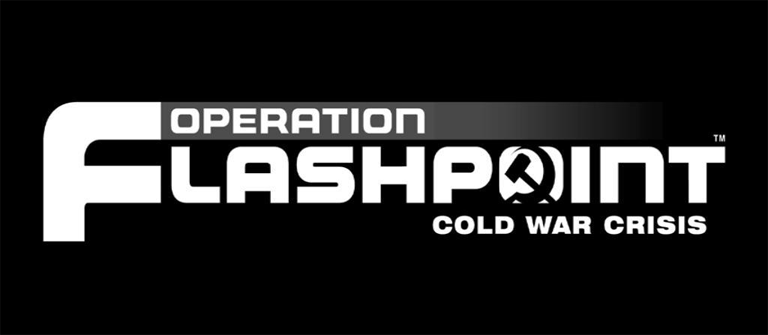
Upon its release, Operation Flashpoint: Cold War Crisis was revolutionary in several respects.
While it remained a true military simulation, it had none of the past – shall we say – genre limtations and though your character was always a simple infantry grunt, that wee grunt could hop on a bicycle or motorcycle, drive a car, truck, an APC, tank or self-propelled gun; mount a heavy machine gun or mortar; climb into the cockpit of a helicopter, take off in a strategic bomber or steer a boat. Every major class of vehicle was included in the game and each one could be controlled by the player from inside a fully realized cockpit or 3rd person perspective.
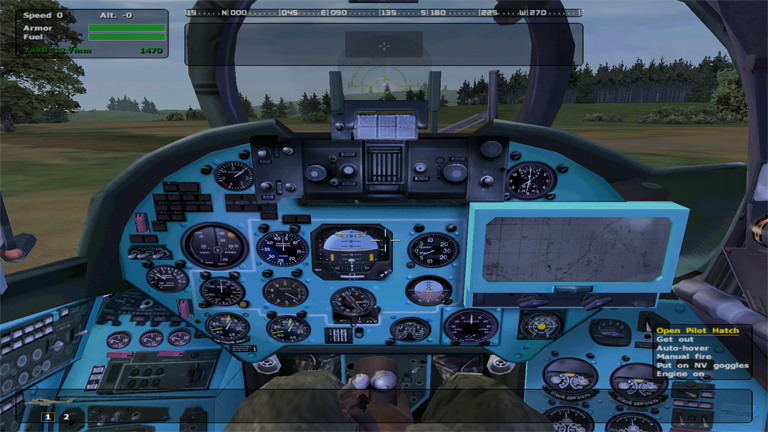
The battlefields you played on did have soft boundaries (the maps were all islands surrounded by ocean and your character couldn't swim); but their scale was unlike anything the gaming world had seen to date (we're talking 10 real-world kilometers on a side, here; enough distance to make even a supersonic flyby last a a good minute or so). The distances were so vast, in fact, that you could comfortably snipe somebody in the next town (provided your computer could handle such drawing distance and you correctly gauged the "here's the curvature of the earth" bullet drop).
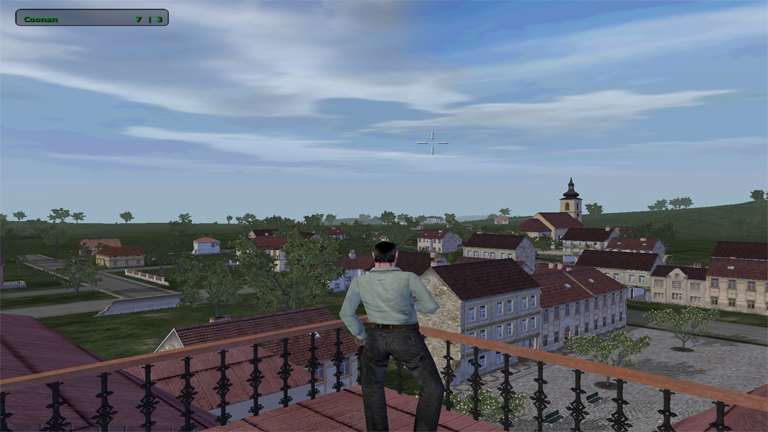
The amount of topographic detail was also unparalleled, with rivers, bridges, hills and valleys, dense sections of traversable forest, actual greenery you could hide behind, villages, towns and cities, airfields and – yes – actual, working gas stations you could fuel up at (because, in true sim fashion, all vehicles consumed fuel and could run dry eventually).
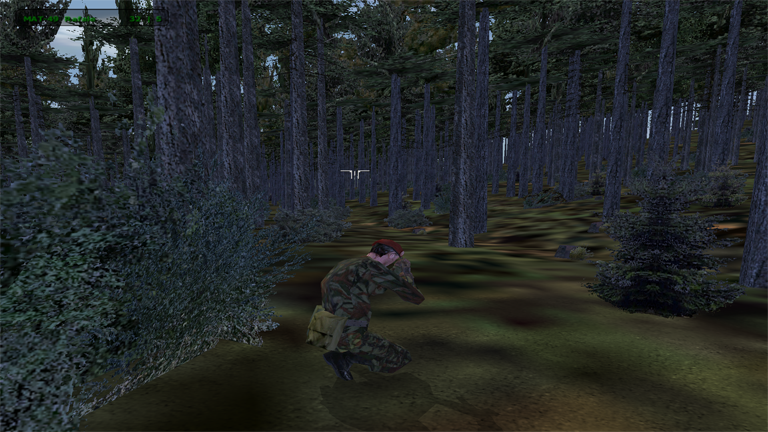
And while the quality of the graphics was middling to low, to compensate for the size of the game world, and only select buildings could actually be entered (and then for no real purpose or advantage), it was still leaps and bounds ahead of anything attempted up to that point (a trend which its ARMA successors have handily maintained).
Lastly, the scale of engagements was finally on par with reality. If you wanted to see how a company-strength mechanized infantry charge with artillery and aerial support would fare against, say, a dozen main battle tanks, you finally could (provided your computer had enough oomph to handle the graphics load).
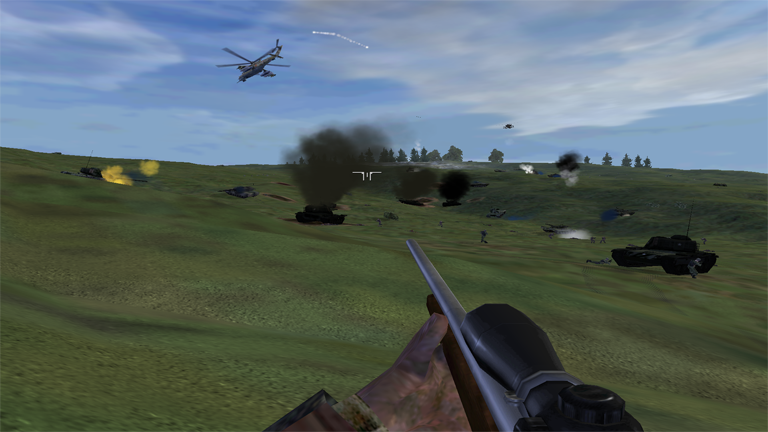
Flashpoint combat favored realism over enjoyment, with no "hit points" to speak of and realistic damage mapping (a single head or body shot was usually fatal, while glancing hits to the arms and legs decreased your accuracy or limited your mobility, forcing you to crawl). Characters had to stop to reload their weapons which had realistic sway (affected by exertion) and varying recoil, damage and noise values. Vehicles could be impaired in a myriad ways that would decrease their handling or effectiveness (like knocking out the turret on a tank or puncturing a tire in a car).
The overall effect was so close to the real thing that Flashpoint's engine was adapted into the VBS 1 simulator for actual active military training (which Bohemia continued to develop alongside later ARMA releases, culminating in the current VBS 4 simulator suite).
The game offered three distinct campaigns (only two of which remain in the release available on GoG, because of legal, Bohemia vs. Codemasters wrangling), a handful of single player missions, LAN connectivity and a full-fledged editor for building more content, which is where the popularity of the game really took off.
From its solid, 2001 release, Flashpoint attracted a worldwide modding scene which – over the course of the next decade – provided it with content for every major historical conflict (and quite a few fictional ones, too). From WW1 trench warfare to the Falklands (Malvinas), WW2 to Vietnam, zombies to Space Marines and Predators to giant robots – the Flashpoint mod scene has seen it all.
Due praise aside, the game was not without its faults and limitations. While interactivity with the game world was yonks ahead of its contemporaries, by modern gameplay standards, it was still a bit stiff and restrictive. Jumping onto a vehicle, for example, didn't happen on the fly and while your character could crawl, crouch or sprint, they couldn't lean around a corner or climb a fence.
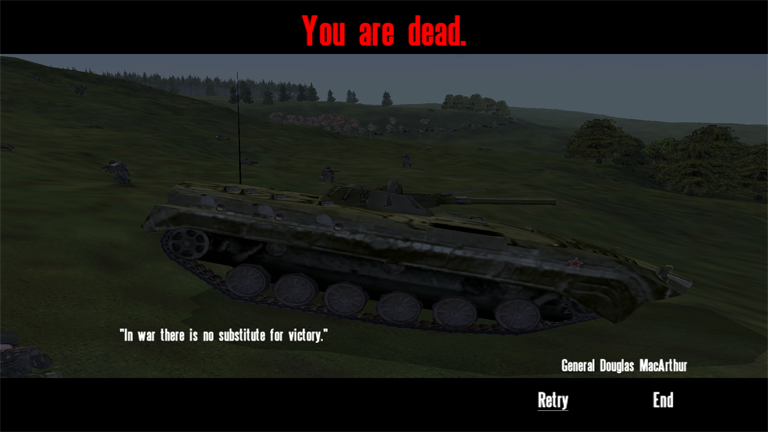
The high level of realism also didn't make for fun gameplay (although – contrary to the Cannon Fodder opening song – war isn't supposed to be fun) and you could often, frustratingly, die from something you weren't even aware of (which the game would then gleefully zoom in on to let you see the origin of your demise). The fact that you were only permitted a single save state per every 20-40 minute mission didn't exactly help.
But while it may not have been the most enjoyable game, for what it set out to do (realistically portray large scale armed conflicts), Operation Flashpoint was a resounding success and remains play-worthy to this very day (provided you can cope with its steep difficulty and overlook its dated graphics).
Bohemia has continued cranking out sequels (which, because of its split with Codemasters – who own the "Flashpoint" moniker – have been re-branded as Armed Assault — or ARMA for short), which offer ever better graphics, realism and massive amounts of content. Unfortunately, Bohemia has also moved firmly into Steam-land, which (outside of two games on GoG) has put them firmly beyond this pig's grasp (or interest). But for all their upgraded graphics and refined gameplay, none of the sequels ever accomplished the feeling of community that the original Flashpoint had.
If you enjoy realistic war sims, like building your own missions, are fond of the 1980s setting (warfare-wise) or are looking for a way to lose countless hours sifting old mods and addons, I would highly recommend you give old Flashpoint a try. You can find the slimmed-down, ARMA: Cold War Assault version (lacking the Red Hammer expansion) on GoG, but physical copies are also still rattling around eBay (which, with the free GoTY 1.96 patch, will bring you up to speed).
Recommended Addons:
-
-a comprehensive list of good addons would likely be longer than this review (before I stopped playing regularly, my Addons folder ran to the tune of 344 files — and that's not counting complete overhaul mods like FDF), but here are a few noteworthy enough to be memorable decades on;
-
-Footmunch did great aircraft for a while (I still miss Footmunch Fridays), which came with varied loadouts and customizable rondels (so you could tailor their appearance to the setting of a particular mission);
-
-Kegetys' addons were very varied (from weapons to vehicles to an entire winter map) but were always of good quality (from what I remember, he did a lot of work for the FDF mod later, which was also quite accomplished);
-
-IkaR only made a few addons, but they were very well done (his Rafale and F-14, in particular, looked great and handled even better);
-
-ORCS and Red Hammer Studios did quality Russian gear;
-
-Occitania and Operation Frenchpoint were neat, because they gave you the full range of historical French military units and vehicles (from the 60s to the 80s, I think), but integrated into the core game (instead of a separate mod);
-
-the MERCS team had very inventive and surprisingly well done civilian addons (like their HiLux, safe or Deloraine island); and
-
-Syphboy's pistols were a cut above the rest, with diligent models and fully animated slides;
Pig recommends:
- -visiting http://ofpr.info/ which still hosts many of the great addons and mods for Flashpoint;
